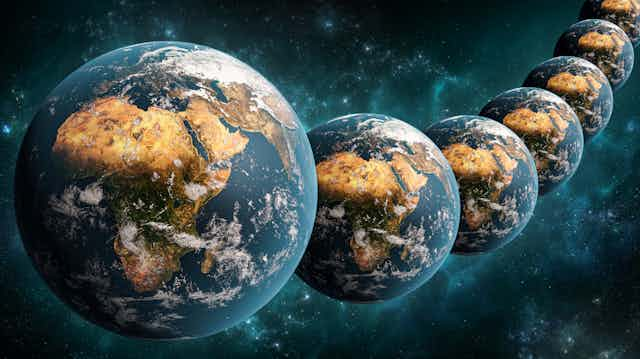

Time travel could be possible, but only with parallel timelines
Assistant Professor, Physics, Brock University
Disclosure statement
Barak Shoshany does not work for, consult, own shares in or receive funding from any company or organisation that would benefit from this article, and has disclosed no relevant affiliations beyond their academic appointment.
Brock University provides funding as a member of The Conversation CA-FR.
Brock University provides funding as a member of The Conversation CA.
View all partners
Have you ever made a mistake that you wish you could undo? Correcting past mistakes is one of the reasons we find the concept of time travel so fascinating. As often portrayed in science fiction, with a time machine, nothing is permanent anymore — you can always go back and change it. But is time travel really possible in our universe , or is it just science fiction?
Read more: Curious Kids: is time travel possible for humans?
Our modern understanding of time and causality comes from general relativity . Theoretical physicist Albert Einstein’s theory combines space and time into a single entity — “spacetime” — and provides a remarkably intricate explanation of how they both work, at a level unmatched by any other established theory. This theory has existed for more than 100 years, and has been experimentally verified to extremely high precision, so physicists are fairly certain it provides an accurate description of the causal structure of our universe.
For decades, physicists have been trying to use general relativity to figure out if time travel is possible . It turns out that you can write down equations that describe time travel and are fully compatible and consistent with relativity. But physics is not mathematics, and equations are meaningless if they do not correspond to anything in reality.
Arguments against time travel
There are two main issues which make us think these equations may be unrealistic. The first issue is a practical one: building a time machine seems to require exotic matter , which is matter with negative energy. All the matter we see in our daily lives has positive energy — matter with negative energy is not something you can just find lying around. From quantum mechanics, we know that such matter can theoretically be created, but in too small quantities and for too short times .
However, there is no proof that it is impossible to create exotic matter in sufficient quantities. Furthermore, other equations may be discovered that allow time travel without requiring exotic matter. Therefore, this issue may just be a limitation of our current technology or understanding of quantum mechanics.

The other main issue is less practical, but more significant: it is the observation that time travel seems to contradict logic, in the form of time travel paradoxes . There are several types of such paradoxes, but the most problematic are consistency paradoxes .
A popular trope in science fiction, consistency paradoxes happen whenever there is a certain event that leads to changing the past, but the change itself prevents this event from happening in the first place.
For example, consider a scenario where I enter my time machine, use it to go back in time five minutes, and destroy the machine as soon as I get to the past. Now that I destroyed the time machine, it would be impossible for me to use it five minutes later.
But if I cannot use the time machine, then I cannot go back in time and destroy it. Therefore, it is not destroyed, so I can go back in time and destroy it. In other words, the time machine is destroyed if and only if it is not destroyed. Since it cannot be both destroyed and not destroyed simultaneously, this scenario is inconsistent and paradoxical.
Eliminating the paradoxes
There’s a common misconception in science fiction that paradoxes can be “created.” Time travellers are usually warned not to make significant changes to the past and to avoid meeting their past selves for this exact reason. Examples of this may be found in many time travel movies, such as the Back to the Future trilogy.
But in physics, a paradox is not an event that can actually happen — it is a purely theoretical concept that points towards an inconsistency in the theory itself. In other words, consistency paradoxes don’t merely imply time travel is a dangerous endeavour, they imply it simply cannot be possible.
This was one of the motivations for theoretical physicist Stephen Hawking to formulate his chronology protection conjecture , which states that time travel should be impossible. However, this conjecture so far remains unproven. Furthermore, the universe would be a much more interesting place if instead of eliminating time travel due to paradoxes, we could just eliminate the paradoxes themselves.
One attempt at resolving time travel paradoxes is theoretical physicist Igor Dmitriyevich Novikov’s self-consistency conjecture , which essentially states that you can travel to the past, but you cannot change it.
According to Novikov, if I tried to destroy my time machine five minutes in the past, I would find that it is impossible to do so. The laws of physics would somehow conspire to preserve consistency.
Introducing multiple histories
But what’s the point of going back in time if you cannot change the past? My recent work, together with my students Jacob Hauser and Jared Wogan, shows that there are time travel paradoxes that Novikov’s conjecture cannot resolve. This takes us back to square one, since if even just one paradox cannot be eliminated, time travel remains logically impossible.
So, is this the final nail in the coffin of time travel? Not quite. We showed that allowing for multiple histories (or in more familiar terms, parallel timelines) can resolve the paradoxes that Novikov’s conjecture cannot. In fact, it can resolve any paradox you throw at it.
The idea is very simple. When I exit the time machine, I exit into a different timeline. In that timeline, I can do whatever I want, including destroying the time machine, without changing anything in the original timeline I came from. Since I cannot destroy the time machine in the original timeline, which is the one I actually used to travel back in time, there is no paradox.
After working on time travel paradoxes for the last three years , I have become increasingly convinced that time travel could be possible, but only if our universe can allow multiple histories to coexist. So, can it?
Quantum mechanics certainly seems to imply so, at least if you subscribe to Everett’s “many-worlds” interpretation , where one history can “split” into multiple histories, one for each possible measurement outcome – for example, whether Schrödinger’s cat is alive or dead, or whether or not I arrived in the past.
But these are just speculations. My students and I are currently working on finding a concrete theory of time travel with multiple histories that is fully compatible with general relativity. Of course, even if we manage to find such a theory, this would not be sufficient to prove that time travel is possible, but it would at least mean that time travel is not ruled out by consistency paradoxes.
Time travel and parallel timelines almost always go hand-in-hand in science fiction, but now we have proof that they must go hand-in-hand in real science as well. General relativity and quantum mechanics tell us that time travel might be possible, but if it is, then multiple histories must also be possible.
- Time travel
- Theoretical physics
- Time machine
- Albert Einstein
- Listen to this article
- Time travel paradox

Scheduling Analyst

Assistant Editor - 1 year cadetship

Executive Dean, Faculty of Health

Lecturer/Senior Lecturer, Earth System Science (School of Science)

Sydney Horizon Educators (Identified)

Is Time Travel Possible?
We all travel in time! We travel one year in time between birthdays, for example. And we are all traveling in time at approximately the same speed: 1 second per second.
We typically experience time at one second per second. Credit: NASA/JPL-Caltech
NASA's space telescopes also give us a way to look back in time. Telescopes help us see stars and galaxies that are very far away . It takes a long time for the light from faraway galaxies to reach us. So, when we look into the sky with a telescope, we are seeing what those stars and galaxies looked like a very long time ago.
However, when we think of the phrase "time travel," we are usually thinking of traveling faster than 1 second per second. That kind of time travel sounds like something you'd only see in movies or science fiction books. Could it be real? Science says yes!

This image from the Hubble Space Telescope shows galaxies that are very far away as they existed a very long time ago. Credit: NASA, ESA and R. Thompson (Univ. Arizona)
How do we know that time travel is possible?
More than 100 years ago, a famous scientist named Albert Einstein came up with an idea about how time works. He called it relativity. This theory says that time and space are linked together. Einstein also said our universe has a speed limit: nothing can travel faster than the speed of light (186,000 miles per second).
Einstein's theory of relativity says that space and time are linked together. Credit: NASA/JPL-Caltech
What does this mean for time travel? Well, according to this theory, the faster you travel, the slower you experience time. Scientists have done some experiments to show that this is true.
For example, there was an experiment that used two clocks set to the exact same time. One clock stayed on Earth, while the other flew in an airplane (going in the same direction Earth rotates).
After the airplane flew around the world, scientists compared the two clocks. The clock on the fast-moving airplane was slightly behind the clock on the ground. So, the clock on the airplane was traveling slightly slower in time than 1 second per second.
Credit: NASA/JPL-Caltech
Can we use time travel in everyday life?
We can't use a time machine to travel hundreds of years into the past or future. That kind of time travel only happens in books and movies. But the math of time travel does affect the things we use every day.
For example, we use GPS satellites to help us figure out how to get to new places. (Check out our video about how GPS satellites work .) NASA scientists also use a high-accuracy version of GPS to keep track of where satellites are in space. But did you know that GPS relies on time-travel calculations to help you get around town?
GPS satellites orbit around Earth very quickly at about 8,700 miles (14,000 kilometers) per hour. This slows down GPS satellite clocks by a small fraction of a second (similar to the airplane example above).

GPS satellites orbit around Earth at about 8,700 miles (14,000 kilometers) per hour. Credit: GPS.gov
However, the satellites are also orbiting Earth about 12,550 miles (20,200 km) above the surface. This actually speeds up GPS satellite clocks by a slighter larger fraction of a second.
Here's how: Einstein's theory also says that gravity curves space and time, causing the passage of time to slow down. High up where the satellites orbit, Earth's gravity is much weaker. This causes the clocks on GPS satellites to run faster than clocks on the ground.
The combined result is that the clocks on GPS satellites experience time at a rate slightly faster than 1 second per second. Luckily, scientists can use math to correct these differences in time.

If scientists didn't correct the GPS clocks, there would be big problems. GPS satellites wouldn't be able to correctly calculate their position or yours. The errors would add up to a few miles each day, which is a big deal. GPS maps might think your home is nowhere near where it actually is!
In Summary:
Yes, time travel is indeed a real thing. But it's not quite what you've probably seen in the movies. Under certain conditions, it is possible to experience time passing at a different rate than 1 second per second. And there are important reasons why we need to understand this real-world form of time travel.
If you liked this, you may like:
Physicists Weigh In: Could We Ever Travel to a Parallel Universe?
Intellectual face-off: which side are you on.
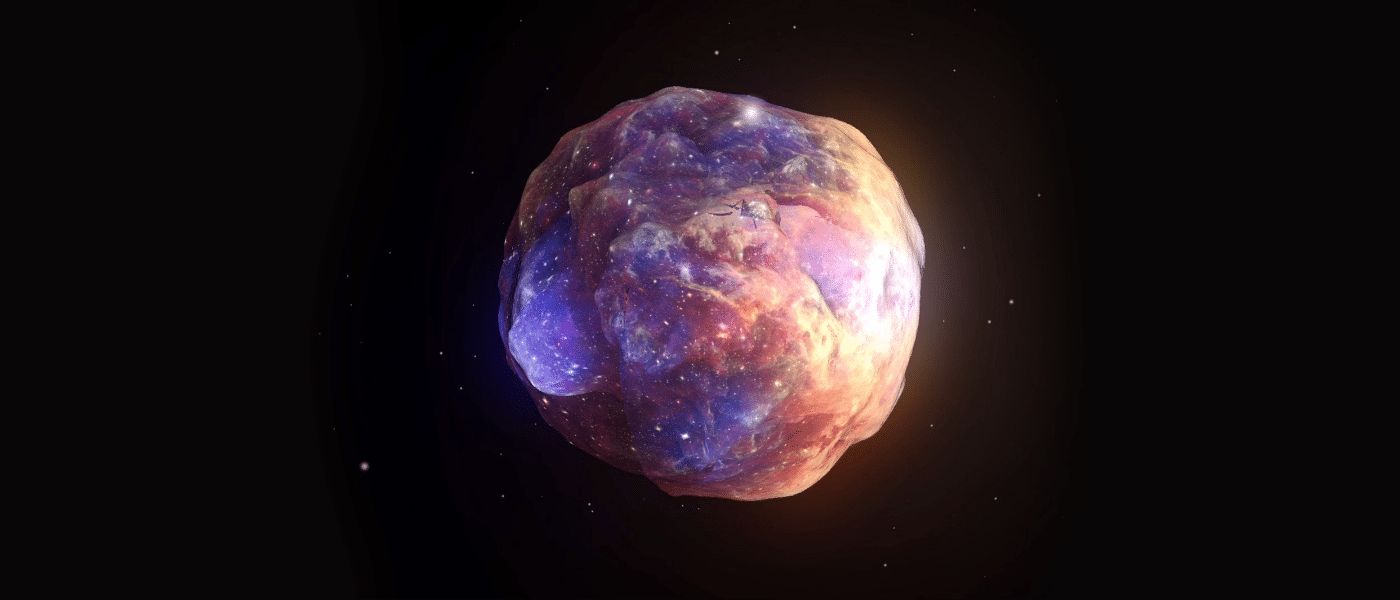
Are Your Carbon Copies Out There?
One very prominent mind twister in both science fiction and real-life science is the concept of parallel universes. This is hardly surprising, since the idea of multiple copies of yourself existing at the same time is both existentially disturbing and thrilling.
The idea of a multiverse is not considered a scientific theory but rather, as Ethan Siegel of Forbes puts it , “a theoretical consequence of the laws of physics as they’re best understood today.” The idea that space-time begins and stretches infinitely implies that existence is mathematically bound to repeat itself at some point—a notion sometimes called the "quilted multiverse."
Or, forgetting the idea of repetitious cosmic clones, there's the possibility that multiple big bangs begat multiple space-time bubbles, in a foamy multiversal sea of infinite potentialities. Here's how it works:

How to Get There?
But what we want to know is: could you ever get to another space-time?
That depends. The American theoretical physicist and string theorist extraordinaire Brian Greene, of Columbia University, argues that the plausibility of multiversal travel—conceding that parallel universes really do exist—hinges on which multiverse concept you subscribe to. If you are an advocate of a multiple big bang multiverse, then that would mean that leaving our universe to travel to another would be just as impossible as travelling back to the time before the big bang that resulted in our universe even happened.
Now, if you believe a quantum physics-dominated notion of parallel universes, then there’s no need to travel to other universes, because you are already inhabiting multiple alternate universes (though not necessarily all of them). Can't decide which dress to wear? No matter—you've worn them both, in two separate parallel universes.
Meanwhile, theoretical physicist Michio Kaku believes that our universe will end up in a “ big freeze ,” and that technology can one day allow us to travel between universes.
Neil deGrasse Tyson, on the other hand, says that if you come from a universe with higher dimensions , then it could be as easy to move between dimensions as stepping from one room to another. And in string theory —one of the leading contenders in bridging the seemingly insuperable gulf sundering quantum mechanics and general relativity—the assumption is that we actually have far more dimensions in this universe than we previously thought and that we just fail to detect them because they are actually very small, curled up in the infinitely minute, trans-subatomic realms beyond the reach of our instruments.
But how can we prove (or disprove) any of these arguments without gaining first-hand experience of it? Much as many aspects of our universe still remain elusive to us, it's currently impossible to acquire any proof to confirm which of these hypotheses is right. But while we don't have the means to definitively prove whether alternate universes do exist , and whether we could traverse borders to move from one to another, it’s highly unlikely that a topic as stimulating as this will disappear anytime soon, either in science fiction or in real-life science.
Meanwhile, physicists are at it. Watch this brief video of physicists going head to head with each other on string theory, Math, and potentially embarrassing alien encounters.
Share This Article
A Smithsonian magazine special report
Can Physicists Ever Prove the Multiverse Is Real?
Astronomers are arguing about whether they can trust this untested—and potentially untestable—idea
Sarah Scoles
/https://tf-cmsv2-smithsonianmag-media.s3.amazonaws.com/filer/db/c4/dbc4cd8b-b4b3-4a28-b211-42bc49a87a11/42-46205410.jpg)
The universe began as a Big Bang and almost immediately began to expand faster than the speed of light in a growth spurt called “ inflation .” This sudden stretching smoothed out the cosmos, smearing matter and radiation equally across it like ketchup and mustard on a hamburger bun.
That expansion stopped after just a fraction of a second. But according to an idea called the “inflationary multiverse,” it continues—just not in our universe where we could see it. And as it does, it spawns other universes. And even when it stops in those spaces, it continues in still others. This “eternal inflation” would have created an infinite number of other universes.
Together, these cosmic islands form what scientists call a “multiverse.” On each of these islands, the physical fundamentals of that universe—like the charges and masses of electrons and protons and the way space expands—could be different.
Cosmologists mostly study this inflationary version of the multiverse, but the strange scenario can takes other forms, as well. Imagine, for example, that the cosmos is infinite. Then the part of it that we can see—the visible universe—is just one of an uncountable number of other, same-sized universes that add together to make a multiverse. Another version, called the “Many Worlds Interpretation,” comes from quantum mechanics. Here, every time a physical particle, such as an electron, has multiple options, it takes all of them—each in a different, newly spawned universe.

But all of those other universes might be beyond our scientific reach. A universe contains, by definition, all of the stuff anyone inside can see, detect or probe. And because the multiverse is unreachable, physically and philosophically, astronomers may not be able to find out—for sure—if it exists at all.
Determining whether or not we live on one of many islands, though, isn’t just a quest for pure knowledge about the nature of the cosmos. If the multiverse exists, the life-hosting capability of our particular universe isn’t such a mystery: An infinite number of less hospitable universes also exist. The composition of ours, then, would just be a happy coincidence. But we won’t know that until scientists can validate the multiverse. And how they will do that, and if it even possible to do that, remains an open question.
Null results
This uncertainty presents a problem. In science, researchers try to explain how nature works using predictions that they formally call hypotheses. Colloquially, both they and the public sometimes call these ideas “theories.” Scientists especially gravitate toward this usage when their idea deals with a wide-ranging set of circumstances or explains something fundamental to how physics operates. And what could be more wide-ranging and fundamental than the multiverse?
For an idea to technically move from hypothesis to theory, though, scientists have to test their predictions and then analyze the results to see whether their initial guess is supported or disproved by the data. If the idea gains enough consistent support and describes nature accurately and reliably, it gets promoted to an official theory.
As physicists spelunk deeper into the heart of reality, their hypotheses—like the multiverse—become harder and harder, and maybe even impossible, to test. Without the ability to prove or disprove their ideas, there’s no way for scientists to know how well a theory actually represents reality. It’s like meeting a potential date on the internet: While they may look good on digital paper, you can’t know if their profile represents their actual self until you meet in person. And if you never meet in person, they could be catfishing you. And so could the multiverse.
Physicists are now debating whether that problem moves ideas like the multiverse from physics to metaphysics, from the world of science to that of philosophy.

Show-me state
Some theoretical physicists say their field needs more cold, hard evidence and worry about where the lack of proof leads. “It is easy to write theories,” says Carlo Rovelli of the Center for Theoretical Physics in Luminy, France. Here, Rovelli is using the word colloquially, to talk about hypothetical explanations of how the universe, fundamentally, works. “It is hard to write theories that survive the proof of reality,” he continues. “Few survive. By means of this filter, we have been able to develop modern science, a technological society, to cure illness, to feed billions. All this works thanks to a simple idea: Do not trust your fancies. Keep only the ideas that can be tested. If we stop doing so, we go back to the style of thinking of the Middle Ages.”
He and cosmologists George Ellis of the University of Cape Town and Joseph Silk of Johns Hopkins University in Baltimore worry that because no one can currently prove ideas like the multiverse right or wrong, scientists can simply continue along their intellectual paths without knowing whether their walks are anything but random. “Theoretical physics risks becoming a no-man's-land between mathematics, physics and philosophy that does not truly meet the requirements of any,” Ellis and Silk noted in a Nature editorial in December 2014 .
It’s not that physicists don’t want to test their wildest ideas. Rovelli says that many of his colleagues thought that with the exponential advance of technology—and a lot of time sitting in rooms thinking—they would be able to validate them by now. “I think that many physicists have not found a way of proving their theories, as they had hoped, and therefore they are gasping,” says Rovelli.
“Physics advances in two manners,” he says. Either physicists see something they don’t understand and develop a new hypothesis to explain it, or they expand on existing hypotheses that are in good working order. “Today many physicists are wasting time following a third way: trying to guess arbitrarily,” says Rovelli. “This has never worked in the past and is not working now.”
The multiverse might be one of those arbitrary guesses. Rovelli is not opposed to the idea itself but to its purely drawing-board existence. “I see no reason for rejecting a priori the idea that there is more in nature than the portion of spacetime we see,” says Rovelli. “But I haven't seen any convincing evidence so far.”
“Proof” needs to evolve
Other scientists say that the definitions of “evidence” and “proof” need an upgrade. Richard Dawid of the Munich Center for Mathematical Philosophy believes scientists could support their hypotheses, like the multiverse—without actually finding physical support. He laid out his ideas in a book called String Theory and the Scientific Method . Inside is a kind of rubric, called “Non-Empirical Theory Assessment,” that is like a science-fair judging sheet for professional physicists. If a theory fulfills three criteria, it is probably true.
First, if scientists have tried, and failed, to come up with an alternative theory that explains a phenomenon well, that counts as evidence in favor of the original theory. Second, if a theory keeps seeming like a better idea the more you study it, that’s another plus-one. And if a line of thought produced a theory that evidence later supported, chances are it will again.
Radin Dardashti , also of the Munich Center for Mathematical Philosophy, thinks Dawid is straddling the right track. “The most basic idea undergirding all of this is that if we have a theory that seems like it works, and we have come up with nothing that works better, chances are our idea is right,” he says.
But, historically, that undergirding has often collapsed, and scientists haven’t been able to see the obvious alternatives to dogmatic ideas. For example, the Sun, in its rising and setting, seems to go around Earth. People, therefore, long thought that our star orbited the Earth .
Dardashti cautions that scientists shouldn’t go around applying Dawid’s idea willy-nilly, and that it needs more development. But it may be the best idea out there for “testing” the multiverse and other ideas that are too hard, if not impossible, to test. He notes, though, that physicists’ precious time would be better spent dreaming up ways to find real evidence.
Not everyone is so sanguine, though. Sabine Hossenfelder of the Nordic Institute for Theoretical Physics in Stockholm, thinks “post-empirical” and “science” can never live together. “Physics is not about finding Real Truth. Physics is about describing the world,” she wrote on her blog Backreaction in response to an interview in which Dawid expounded on his ideas. And if an idea (which she also colloquially calls a theory) has no empirical, physical backing, it doesn’t belong. “Without making contact to observation, a theory isn’t useful to describe the natural world, not part of the natural sciences, and not physics,” she concluded.

The truth is out there
Some supporters of the multiverse claim they have found real physical evidence for the multiverse. Joseph Polchinski of the University of California, Santa Barbara, and Andrei Linde of Stanford University—some of the theoretical physicists who dreamed up the current model of inflation and how it leads to island universes—say the proof is encoded in our cosmos.
This cosmos is huge, smooth and flat, just like inflation says it should be. “It took some time before we got used to the idea that the large size, flatness, isotropy and uniformity of the universe should not be dismissed as trivial facts of life,” Linde wrote in a paper that appeared on arXiv.org in December . “Instead of that, they should be considered as experimental data requiring an explanation, which was provided with the invention of inflation.”
Similarly, our universe seems fine tuned to be favorable to life, with its Goldilocks expansion rate that’s not too fast or too slow, an electron that’s not too big, a proton that has the exact opposite charge but the same mass as a neutron and a four-dimensional space in which we can live. If the electron or proton were, for example, one percent larger, beings could not be. What are the chances that all those properties would align to create a nice piece of real estate for biology to form and evolve?
In a universe that is, in fact, the only universe, the chances are vanishingly small. But in an eternally inflating multiverse, it is certain that one of the universes should turn out like ours. Each island universe can have different physical laws and fundamentals. Given infinite mutations, a universe on which humans can be born will be born. The multiverse actually explains why we’re here. And our existence, therefore, helps explain why the multiverse is plausible.
These indirect pieces of evidence, statistically combined, have led Polchinski to say he’s 94 percent certain the multiverse exists. But he knows that’s 5.999999 percent short of the 99.999999 percent sureness scientists need to call something a done deal.
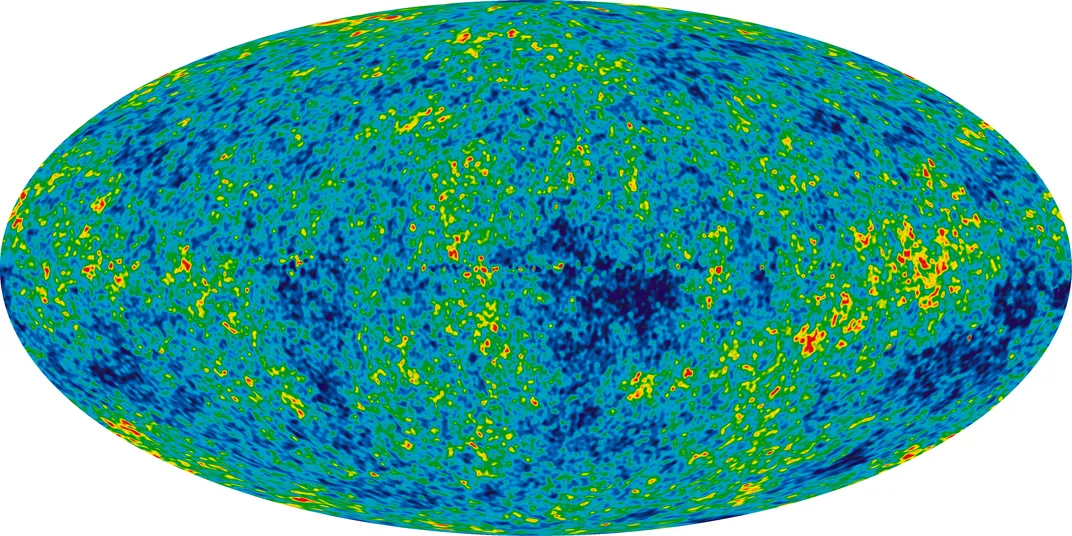
Eventually, scientists may be able to discover more direct evidence of the multiverse. They are hunting for the stretch marks that inflation would have left on the cosmic microwave background , the light left over from the Big Bang. These imprints could tell scientists whether inflation happened, and help them find out whether it’s still happening far from our view. And if our universe has bumped into others in the past, that fender-bender would also have left imprints in the cosmic microwave background. Scientists would be able to recognize that two-car accident. And if two cars exist, so must many more.
Or, in 50 years, physicists may sheepishly present evidence that the early 21 st -century’s pet cosmological theory was wrong.
“We are working on a problem that is very hard, and so we should think about this on a very long time scale,” Polchinski has advised other physicists . That’s not unusual in physics. A hundred years ago, Einstein’s theory of general relativity, for example, predicted the existence of gravitational waves . But scientists could only verify them recently with a billion-dollar instrument called LIGO , the Laser Interferometer Gravitational-Wave Observatory.
So far, all of science has relied on testability. It has been what makes science science and not daydreaming. Its strict rules of proof moved humans out of dank, dark castles and into space. But those tests take time, and most theoreticians want to wait it out. They are not ready to shelve an idea as fundamental as the multiverse—which could actually be the answer to life, the universe and everything—until and unless they can prove to themselves it doesn’t exist. And that day may never come.
Get the latest Science stories in your inbox.
Do we live in a rotating universe? If we did, we could travel back in time
Living in a rotating universe would be strange indeed.

We know that planets rotate, but what about the universe as a whole? No, the universe doesn't appear to rotate; if it did, time travel into the past might be possible.
Although people throughout antiquity had argued that the heavens rotate around the world, in 1949, mathematician Kurt Gödel was the first to provide a modern formulation of a rotating universe. He used the language of Albert Einstein 's theory of general relativity to do so, as a way of honoring his friend and neighbor at Princeton, Einstein himself.
But this process of academic "honoring" went in a different direction than you might suspect, because Gödel used the example of a rotating universe to show that general relativity was incomplete.
Related : Was Einstein wrong? The case against space-time theory
Gödel's model of a rotating universe was rather artificial. Besides the rotation, his universe contained only one ingredient: a negative cosmological constant that resisted the centrifugal force of that rotation to keep the universe static.
But the artificial nature of that universe didn't bother Gödel. Instead, his main point was that general relativity allowed for the possibility of a rotating universe at all. And Gödel used his rotating universe to show that general relativity allowed for time travel into the past, which should be forbidden.
Taking the universe out for a spin
Living in a rotating universe would be strange indeed. For one, all observers would consider themselves the center of rotation. This means that if you parked yourself somewhere and ensured that you were absolutely still, you would see the universe wheeling around you. But if you picked up and moved anywhere else, even to a distant galaxy , you would always still see the universe rotating around your new position.
Get the Space.com Newsletter
Breaking space news, the latest updates on rocket launches, skywatching events and more!
This is incredibly hard to visualize, but it's not much different from the idea that in an expanding universe , all observers see themselves as the center of expansion.
The farther you go from any one observer, the greater the rate of rotation. And this isn't merely a rotation of stuff but a rotation of space-time itself. This means that light, which is always forced to follow the curvature of space-time, makes for some strange journeys. A beam of light sent out from an observer will curve away as it gets swept up in the rotation of space-time. At some distant point, the rotation will be too much, and the light will turn around and return to the observer.
This means there's a limit to how far you can see in a rotating universe, and beyond that, all you'll observe is duplicate images of your own past self.
This strange behavior doesn't apply only to light. If you were to get in a rocket and blast off through a rotating universe, you, too, would get caught up in the rotation. And because of that rotation, your movement would double back on itself. When you returned to your starting point, however, you would find yourself arriving before you had left.
In a manner of speaking, a rotating universe would be capable of rotating your future into your own past, allowing you to travel back in time.
Sitting still
This was Gödel's major objection to general relativity. That theory, being our ultimate understanding of space and time , should not allow for backward time travel, because time travel into the past violates our notions of causality and introduces all sorts of nasty time-travel paradoxes. The fact that relativity did not automatically make time travel impossible signaled to Gödel that Einstein's theory was incomplete.
Thankfully, we see no signs that we live in a rotating universe. If the cosmos were rotating, then light coming from opposite directions of the sky would be redshifted in one direction and have an equivalent amount of blueshifting in the other. Astronomers have applied this test to surveys of distant galaxies and even to the cosmic microwave background , which is the light left over from when the cosmos was only 380,000 years old. The conclusion of these tests is that if the universe is rotating, it's doing so at a rate of less than 10^-17 degrees per century.
— Is time travel possible?
— Why time-traveling tachyons probably don't exist
— What is the grandfather paradox?
But Gödel's objection still stands. Since 1949, physicists have concocted other ways for general relativity to allow for backward time travel, wormholes , faster-than-light-speed "warp drive" (known as Alcubierre drive), and special paths around infinitely long cylinders. But all those contrivances rely on some sort of exotic physics that breaks our understanding of how the universe works, like matter with negative mass.
But Gödel's rotating universe is simply a matter of observational test, not a fundamental break with known physics. We could have found ourselves in a rotating universe just as easily as we find ourselves in an expanding one. There's nothing in our knowledge of physics that prevents this kind of universe from existing, so there's nothing in our knowledge of physics that prevents backward time travel.
Perhaps Gödel is right, and we have more to learn about the universe.
Learn more by listening to the "Ask A Spaceman" podcast, available on iTunes and askaspaceman.com . Ask your own question on Twitter using #AskASpaceman or by following Paul @PaulMattSutter and facebook.com/PaulMattSutter .
Follow us on Twitter @Spacedotcom or on Facebook .
Join our Space Forums to keep talking space on the latest missions, night sky and more! And if you have a news tip, correction or comment, let us know at: [email protected].

Paul M. Sutter is an astrophysicist at SUNY Stony Brook and the Flatiron Institute in New York City. Paul received his PhD in Physics from the University of Illinois at Urbana-Champaign in 2011, and spent three years at the Paris Institute of Astrophysics, followed by a research fellowship in Trieste, Italy, His research focuses on many diverse topics, from the emptiest regions of the universe to the earliest moments of the Big Bang to the hunt for the first stars. As an "Agent to the Stars," Paul has passionately engaged the public in science outreach for several years. He is the host of the popular "Ask a Spaceman!" podcast, author of "Your Place in the Universe" and "How to Die in Space" and he frequently appears on TV — including on The Weather Channel, for which he serves as Official Space Specialist.
China launches Chang'e 6 sample-return mission to moon's far side (video)
A Switzerland-size hole opened in Antarctica's sea ice in 2016-17. Now we know why
Boeing Starliner rolls out to launch pad for 1st astronaut flight on May 6 (photos)
Admin said: A rotating universe would be capable of rotating your future into your own past, allowing you to travel back in time. Do we live in a rotating universe? If we did, we could travel back in time : Read more
- mokeshame I think the universe is rotating but some early assumptions have been made in this article. Like the one that we should red and blueshift every lightbeam. Instead red and blueshift are direct evidence that the universe is rotating and because of that appears to be moving away from us. And it goes faster because the universe on a grand scale will ever rotate faster. This is the endgoal of al conservation of energy. Conserve it in rotations as a way of catapulting the universe to all time high rotation speeds. So in the end the speed isnt conservated any more and goes into a strait line. The universe does this to work in on itself. We see actually one particle that can manage itself. Builds his own structure and forms, with no limits. Just like Lego. Spacetime is the exactly the same as the forming of rotations, so it can not be distorted by it i think. A while ago i saw a matmathhecian that exactly formulated it the way i see it, her name was M. Duchin. I think to understand the base and interactions of the universe we must see it as an geniometrical system. Reply
- View All 2 Comments
Most Popular
- 2 The history of the Jedi Order in 'Star Wars'
- 3 Star Wars Day 2024: 'Star Wars: Tales of the Empire' premieres today on Disney+
- 4 Free Comic Book Day 2024: Get Marvel Comics 'Star Wars #1' for free
- 5 This Week In Space podcast: Episode 109 — Music of the Spheres
May 15, 2023
Is Time Travel Even Possible?
Two SciAm editors duke it out to see if wormholes and multiverses could in fact exist.
By Lee Billings , Clara Moskowitz , Alexa Lim & Tulika Bose
Warp to planet Earth.
Nickpanya/Getty Images ; Elements provided by NASA; Title animation by Kelso Harper

SUBSCRIBE: Apple | Spotify
Clara Moskowitz: We’re here today to talk about time travel. A perennial – dare I say, timeless–topic of science fiction, but is it possible? Is there any chance at all that it could actually happen?
Lee Billings: No. No, no no no no. (laughs). Well, kinda. Not really. ARGH. I’m Lee Billings.
On supporting science journalism
If you're enjoying this article, consider supporting our award-winning journalism by subscribing . By purchasing a subscription you are helping to ensure the future of impactful stories about the discoveries and ideas shaping our world today.
Moskowitz: I’m Clara Moskowitz, and this is Cosmos, Quickly , the biweekly space podcast from Scientific American .
[Clip: Show theme music]
Moskowitz: We’re going to have a little friendly debate.
Billings: Really? I came for a throwdown.
Moskowitz: Well, a wrangle. A parley. A confab. Lee, what do you have against time travel?
Billings: So I love the idea of time travel! And in fact I do it all the time—like most everyone else I’m traveling into the future at one second per second. I’m less of a fan, though, of more speculative time travel, which is good fodder for goofy sci-fi stories, but in the real world it’s an implausible distraction.
Moskowitz: But really, we can stay within plausible physics and still see how more extreme versions of time travel are possible. See, Einstein’s special theory of relativity shows that the rate time flows at depends on how fast you’re moving.
Billings: Einstein strikes again, what a rascal.
Moskowitz: If you’re traveling in a starship at close to the speed of light, you’ll still experience the familiar one-second-per-second ticking of a clock– but an observer back on Earth would see your clock moving glacially slow. To them, you’d be moving through time at a snail’s pace. That means that when you finally got back, maybe only a year would have passed for you, but a century could have gone by for your friends on Earth. Ergo, you just traveled to the future!
Billings: Right, right, no one’s disputing any of that! We can even measure this sort of “time dilation” right now on Earth, not with starships, but with subatomic particles. Some of those particles have very short lifetimes, decaying almost instantaneously. But if we drastically speed them up, like in a particle accelerator, we find they endure longer in proportion to how fast they’re going. So riddle me this, though, Clara: How can we travel into the past? That’s something so hard to do–effectively impossible, almost–that it’s scarcely worth thinking about.
[Clip: Back to the Future : “This is what makes time travel possible. The flux capacitor!”]
Moskowitz: I get it—no one has yet conceived of a way to journey to the past. But the crazy thing is it’s not impossible. Time is one of the four dimensions in the universe, along with three dimensions of space. And we move through space in all directions just fine, and according to physics, travel through time should be just as possible.
One way that people have looked into is via a wormhole—a shortcut bridge through spacetime that was predicted by general relativity. Wormholes can connect distant points in spacetime, meaning you could conceivably use one to bridge not just the gap between here and a distant galaxy, but the span between 2023 and 1923.
[CLIP: Interstellar : “That’s the wormhole.”]
Billings : Ah yes, wormholes—the last refuge of scoundrels and desperate physicists. The trouble with wormholes Clara, is that, unlike a DeLorean, we have no evidence they actually exist—and, even if they did, it seems the only ways to make them traversable and stable involves using negative energy or negative mass to prop them open. And, guess what, just like wormholes themselves, we have no evidence these weird forms of matter and energy actually exist, either. And let’s just beat this dead horse one more time—even if wormholes exist, as well as the means to make them traversable, to go back in time seems to require anchoring one end in a region of very warped spacetime, like around a black hole, or accelerating it to nearly lightspeed. Are you sensing a theme here, Clara?
Moskowitz: Yeah, yeah. All I can say is that just because there’s no evidence any of these things exist, there’s also no evidence they don’t or can’t exist. Wormholes are real solutions to the equations of general relativity, and even negative energy and mass are concepts that come up in the math and aren’t prohibited.
Billings: Well how about some more practical arguments, then? If time travel were possible, wouldn’t we have met some time travelers by now? Wouldn’t someone have gone back and killed Hitler—or at least prevented me from wearing that ridiculous outfit to my high school prom? You know there’s a famous story about physicist Stephen Hawking, who invited time travelers to come to a party he was holding. The trick was the the party happened in 2009, but the invitation came out in a miniseries that was broadcast in 2010—thus, only time travelers would have been able to attend.
[CLIP: Stephen Hawking Time Travel Party: “Here is the invitation, giving the exact coordinates in time and space. I am hoping in one form or another it will survive for many thousands of years.”]
Billings: Sadly, the hors d'oeuvres went uneaten and the champagne sat unopened, because, clearly, time travel to the past is impossible!
Moskowitz: I admit a party with Stephen Hawking should have been pretty alluring to time travelers, if they were out there. But you’re forgetting about the International Clause of Secrecy that all time travelers probably have to swear to, making sure to hide their identities and abilities from those in earlier eras.
Billings: Hmm, yes the clause of secrecy here. Feels like we’re really veering into science fiction territory special pleading here. And don’t forget all the paradoxes that we have to worry about too. There are lots of good reasons to think time travel might introduce insurmountable paradoxes in physics. The most famous being the grandfather—or grandmother—paradox. If time travel were possible into the past, so the thinking goes, then a person could go back in time and kill their own grandparents, thus making it impossible for them to be born and impossible for them to travel back in time to ever commit the murder, and so on and so on.
Moskowitz: I wonder if it could be like a many-worlds scenario, where each change a time traveler makes to the past spawns a whole new universe that carries on from that point. So if I went back in time and killed one of my forebears, then a new branch universe would begin where that whole line of descendents, including me, never existed. I mean, it sounds crazy, but then again, physics is pretty enamored with multiverses, and they seem to pop up for lots of reasons already. Maybe it’s not impossible?
Billings: If not impossible, then I’d say, implausible.
Moskowitz: Well, I’m forever an optimist, Lee! Thanks for listening to the Cosmos, Quickly .
Billings: Our show is produced by Jeff DelViscio, Tulika Bose and Kelso Harper. Our music was composed by Dominic Smith.
Moskowtiz: If you like the show, please consider rating or leaving a review. You can also email feedback, questions, and tips to [email protected] .
Billings: For more spacetime hijinks and all your science news, head to SciAm.com. This has been Cosmos, Quickly . I’m Lee Billings.
Moskowitz: I’m Clara Moskowitz. Billings: And we’ll see you next time, in the future!

Can anything travel faster than the speed of light?
Does it matter if it's in a vacuum?

In 1676, by studying the motion of Jupiter's moon Io, Danish astronomer Ole Rømer calculated that light travels at a finite speed. Two years later, building on data gathered by Rømer, Dutch mathematician and scientist Christiaan Huygens became the first person to attempt to determine the actual speed of light, according to the American Museum of Natural History in New York City. Huygens came up with a figure of 131,000 miles per second (211,000 kilometers per second), a number that isn't accurate by today's standards — we now know that the speed of light in the "vacuum" of empty space is about 186,282 miles per second (299,792 km per second) — but his assessment showcased that light travels at an incredible speed.
According to Albert Einstein 's theory of special relativity , light travels so fast that, in a vacuum, nothing in the universe is capable of moving faster.
"We cannot move through the vacuum of space faster than the speed of light," confirmed Jason Cassibry, an associate professor of aerospace engineering at the Propulsion Research Center, University of Alabama in Huntsville.
Question answered, right? Maybe not. When light is not in a vacuum, does the rule still apply?
Related: How many atoms are in the observable universe?
"Technically, the statement 'nothing can travel faster than the speed of light' isn't quite correct by itself," at least in a non-vacuum setting, Claudia de Rham, a theoretical physicist at Imperial College London, told Live Science in an email. But there are certain caveats to consider, she said. Light exhibits both particle-like and wave-like characteristics, and can therefore be regarded as both a particle (a photon ) and a wave. This is known as wave-particle duality.
If we look at light as a wave, then there are "multiple reasons" why certain waves can travel faster than white (or colorless) light in a medium, de Rham said. One such reason, she said, is that "as light travels through a medium — for instance, glass or water droplets — the different frequencies or colors of light travel at different speeds." The most obvious visual example of this occurs in rainbows, which typically have the long, faster red wavelengths at the top and the short, slower violet wavelengths at the bottom, according to a post by the University of Wisconsin-Madison .
Sign up for the Live Science daily newsletter now
Get the world’s most fascinating discoveries delivered straight to your inbox.
When light travels through a vacuum, however, the same is not true. "All light is a type of electromagnetic wave, and they all have the same speed in a vacuum (3 x 10^8 meters per second). This means both radio waves and gamma rays have the same speed," Rhett Allain, a physics professor at Southeastern Louisiana University, told Live Science in an email.
So, according to de Rham, the only thing capable of traveling faster than the speed of light is, somewhat paradoxically, light itself, though only when not in the vacuum of space. Of note, regardless of the medium, light will never exceed its maximum speed of 186,282 miles per second.
Universal look
According to Cassibry, however, there is something else to consider when discussing things moving faster than the speed of light.
"There are parts of the universe that are expanding away from us faster than the speed of light, because space-time is expanding," he said. For example, the Hubble Space Telescope recently spotted 12.9 billion year-old light from a distant star known as Earendel. But, because the universe is expanding at every point, Earendel is moving away from Earth and has been since its formation, so the galaxy is now 28 billion light years away from Earth.
In this case, space-time is expanding, but the material in space-time is still traveling within the bounds of light speed.
Related: Why is space a vacuum?
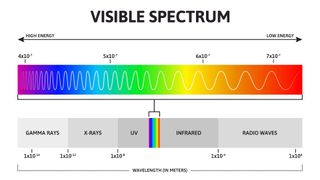
So, it's clear that nothing travels faster than light that we know of, but is there any situation where it might be possible? Einstein's theory of special relativity, and his subsequent theory of general relativity, is "built under the principle that the notions of space and time are relative," de Rham said. But what does this mean? "If someone [were] able to travel faster than light and carry information with them, their notion of time would be twisted as compared to ours," de Rham said. "There could be situations where the future could affect our past, and then the whole structure of reality would stop making sense."
This would indicate that it would probably not be desirable to make a human travel faster than the speed of light. But could it ever be possible? Will there ever be a time when we are capable of creating craft that could propel materials — and ultimately humans — through space at a pace that outstrips light speed? "Theorists have proposed various types of warp bubbles that could enable faster-than-light travel," Cassibry said.
But is de Rham convinced?
"We can imagine being able to communicate at the speed of light with systems outside our solar system ," de Rham said. "But sending actual physical humans at the speed of light is simply impossible, because we cannot accelerate ourselves to such speed.
"Even in a very idealistic situation where we imagine we could keep accelerating ourselves at a constant rate — ignoring how we could even reach a technology that could keep accelerating us continuously — we would never actually reach the speed of light," she added. "We could get close, but never quite reach it."
Related: How long is a galactic year?
This is a point confirmed by Cassibry. "Neglecting relativity, if you were to accelerate with a rate of 1G [Earth gravity], it would take you a year to reach the speed of light. However, you would never really reach that velocity because as you start to approach lightspeed, your mass energy increases, approaching infinite. "One of the few known possible 'cheat codes' for this limitation is to expand and contract spacetime, thereby pulling your destination closer to you. There seems to be no fundamental limit on the rate at which spacetime can expand or contract, meaning we might be able to get around this velocity limit someday."
— What would happen if the speed of light were much lower?
— What if the speed of sound were as fast as the speed of light?
— How does the rubber pencil illusion work?
Allain is similarly confident that going faster than light is far from likely, but, like Cassibry, noted that if humans want to explore distant planets, it may not actually be necessary to reach such speeds. "The only way we could understand going faster than light would be to use some type of wormhole in space," Allain said. "This wouldn't actually make us go faster than light, but instead give us a shortcut to some other location in space."
Cassibry, however, is unsure if wormholes will ever be a realistic option.
"Wormholes are theorized to be possible based on a special solution to Einstein's field equations," he said. "Basically, wormholes, if possible, would give you a shortcut from one destination to another. I have no idea if it's possible to construct one, or how we would even go about doing it." Originally published on Live Science.

Joe Phelan is a journalist based in London. His work has appeared in VICE, National Geographic, World Soccer and The Blizzard, and has been a guest on Times Radio. He is drawn to the weird, wonderful and under examined, as well as anything related to life in the Arctic Circle. He holds a bachelor's degree in journalism from the University of Chester.
Space photo of the week: A planet-size explosion rocks the sun's 'mossy' corona
China launches Chang'e 6 sample-return mission to moon's far side
32 weird technologies that never took off
Most Popular
- 2 Hundreds of black 'spiders' spotted in mysterious 'Inca City' on Mars in new satellite photos
- 3 Asteroid that exploded over Berlin was fastest-spinning space rock ever recorded
- 4 Cave of Crystals: The deadly cavern in Mexico dubbed 'the Sistine Chapel of crystals'
- 5 Why do dogs sniff each other's butts?
- 2 Cave of Crystals: The deadly cavern in Mexico dubbed 'the Sistine Chapel of crystals'
- 3 Hammer-headed bat: The African megabat that looks like a gargoyle and holds honking pageants
- 4 Antarctic ice hole the size of Switzerland keeps cracking open. Now scientists finally know why.

Life on Other Planets: What is Life and What Does It Need?
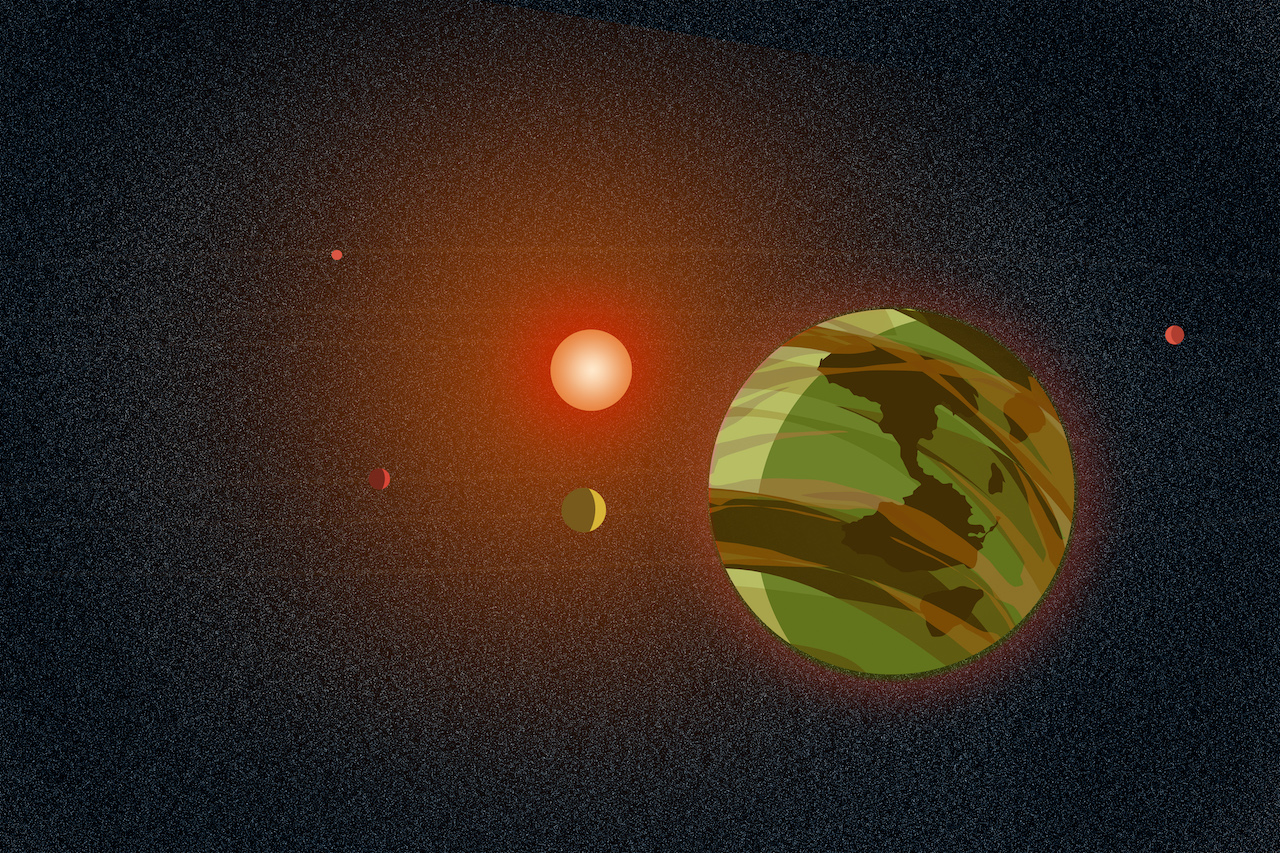
One day, perhaps in the not-too-distant future, a faraway planet could yield hints that it might host some form of life – but surrender its secrets reluctantly.
Our space telescopes might detect a mixture of gases in its atmosphere that resembles our own. Computer models would offer predictions about the planet’s life-bearing potential. Experts would debate whether the evidence made a strong case for the presence of life, or try to find still more evidence to support such a groundbreaking interpretation.
“We are in the beginning of a golden era right now,” said Ravi Kopparapu, a scientist at NASA’s Goddard Space Flight Center in Greenbelt, Maryland, who studies habitable planets. “For the first time in the history of civilization we might be able to answer the question: Is there life beyond Earth?”
For exoplanets – planets around other stars – that era opens with NASA’s James Webb Space Telescope. Instruments aboard the spacecraft are detecting the composition of atmospheres on exoplanets. As the power of telescopes increases in the years ahead, future advanced instruments could capture possible signs of life – “biosignatures” – from a planet light-years away.
Within our solar system, the Perseverance rover on Mars is gathering rock samples for eventual return to Earth, so scientists can probe them for signs of life. And the coming Europa Clipper mission will visit an icy moon of Jupiter. Its goal: to determine whether conditions on that moon would allow life to thrive in its global ocean, buried beneath a global ice shell.
But any hints of life beyond Earth would come with another big question: How certain could any scientific conclusions really be?
“The challenge is deciding what is life – when to say, ‘I found it,’” said Laurie Barge of the Origins and Habitability Lab at NASA’s Jet Propulsion Laboratory in Southern California.
With so much unknown about what even constitutes a “sign of life,” astrobiologists are working on a new framework to understand the strength of the evidence. A sample framework, proposed in 2021, includes a scale ranging from 1 to 7, with hints of other life at level 1, to increasingly substantial evidence, all the way to certainty of life elsewhere at level 7. This framework, which is being discussed and revised, acknowledges that scientific exploration in the search for life is a twisted, winding road, rather than a straightforward path.
And identifying definitive signs remains difficult enough for “life as we know it.” Even more uncertain would be finding evidence of life as we don’t know it, made of unfamiliar molecular combinations or based on a solvent other than water.
Still, as the search for life begins in earnest, among the planets in our own solar system as well as far distant systems known only by their light, NASA scientists and their partners around the world have some ideas that serve as starting points.
Life That Evolves
First, there’s NASA’s less-than-formal, non-binding but still helpful working definition of life: “A self-sustaining chemical system capable of Darwinian evolution.” Charles Darwin famously described evolution by natural selection, with characteristics preserved across generations leading to changes in organisms over time.
Derived in the 1990s by a NASA exobiology working group, the definition is not used to design missions or research projects. It does help to set expectations, and to focus debate on the critical issues around another thorny question: When does non-life become life?
“Biology is chemistry with history,” says Gerald Joyce, one of the members of the working group that helped create the NASA definition and now a research professor at the Salk Institute in La Jolla, California.
That means history recorded by the chemistry itself – in our case, inscribed in our DNA, which encodes genetic data that can be translated into the structures and physical processes that make up our bodies.
The DNA record must be robust, complex, self-replicating and open-ended, Joyce suggests, to endure and adapt over billions of years.
“That would be a smoking gun: evidence for information having been recorded in molecules,” Joyce said.
Such a molecule from another world in our solar system, whether DNA, RNA or something else, might turn up in a sample from Mars, say from the Mars sample-return mission now being planned by NASA.
Or it might be found among the “ocean worlds” in the outer solar system – Jupiter’s moon, Europa, Saturn’s Enceladus or one of the other moons of gas giants that hide vast oceans beneath shells of ice.
We can’t obtain samples of such information-bearing molecules from planets beyond our solar system, since they are so far away that it would take tens of thousands of years to travel there even in the fastest spaceships ever built. Instead, we’ll have to rely on remote detection of potential biosignatures, measuring the types and quantities of gases in exoplanet atmospheres to try to determine whether they were generated by life-forms. That likely will require deeper knowledge of what life needs to get its start – and to persist long enough to be detected.
A Place Where Life Emerges
There is no true consensus on a list of requirements for life, whether in our solar system or the stars beyond. But Joyce, who researches life’s origin and development, suggests a few likely “must-haves.”
Topping the list is liquid water. Despite a broad spectrum of environmental conditions inhabited by living things on Earth, all life on the planet seems to require it. Liquid water provides a medium for the chemical components of life to persist over time and come together for reactions, in a way that air or the surface of a rock don’t do as well.
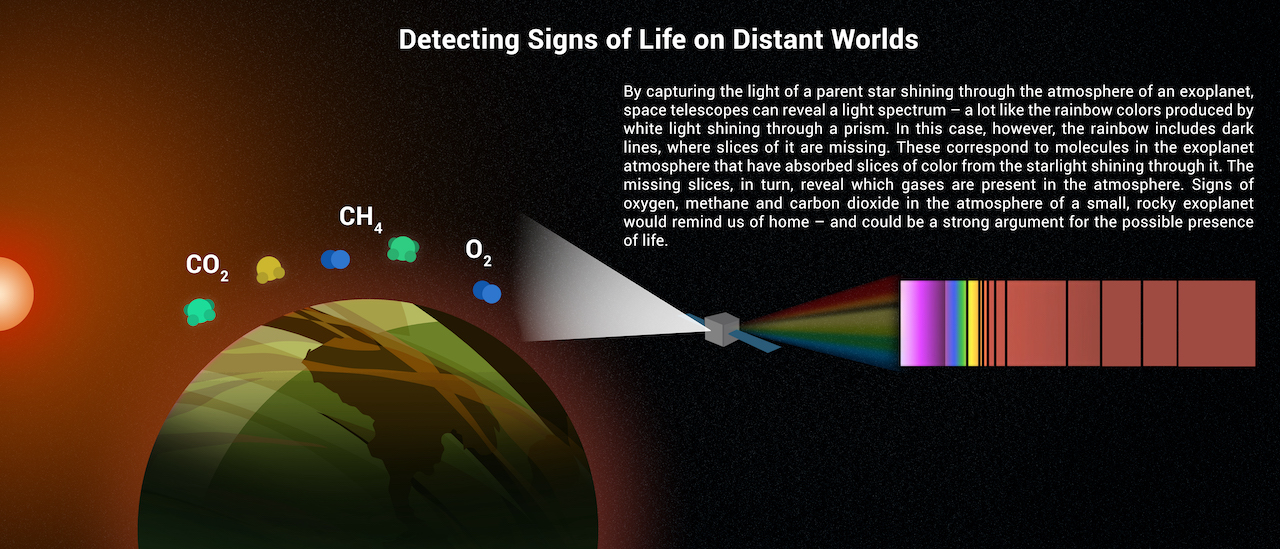
Also essential: an energy source, both for chemical reactions that produce structures and to create “order” against the universal tendency toward “disorder” – also known as entropy.
An imbalance in atmospheric gases also might offer a tell-tale sign of the presence of life.
“In Earth’s atmosphere, oxygen and methane are highly reactive with each other,” Kopparapu said. Left to themselves, they would quickly cancel each other out.
“They should not be seen together,” he said. “So why are we seeing methane, why are we seeing oxygen? Something must be constantly replenishing these compounds.”
On Earth, that “something” is life, pumping more of each into the atmosphere and keeping it out of balance. Such an imbalance, in these compounds or others, could be detected on a distant exoplanet, suggesting the presence of a living biosphere. But scientists also will have to rule out geological processes like volcanic or hydrothermal activity that could generate molecules that we might otherwise associate with life.
Careful laboratory work and precision modeling of possible exoplanet atmospheres will be needed to tell the difference.
Going Through Changes
Barge also places high on the list the idea of “gradients,” or changes that occur over time and distance, like wet to dry, hot to cold, and many other possible environments. Gradients create places for energy to go, changing along the way and generating molecules or chemical systems that later might be incorporated into life-forms.
Plate tectonics on Earth, and the cycling of gases like carbon dioxide – buried beneath Earth’s crust by subduction, perhaps, or released back into the atmosphere by volcanoes – represent one kind of gradient.
Barge’s specialty, the chemistry of hydrothermal vents on the ocean floor billions of years ago, is another. It’s one possible pathway to have created a kind of primitive metabolism – the translation of organic compounds into energy – as a potential precursor to true life-forms.
“What gradients existed before life?” she asks. “If life depends so much on gradients, could the origin of life also have benefited from these gradients?”
Clearer mapping of possible pathways to life ultimately could inform the design of future space telescopes, tasked with parsing the gases in the atmospheres of potentially habitable exoplanets.
“If we want to be sure it’s coming from biology, we have to not only look for gases; we have to look at how it’s being emitted from the planet, if it’s emitted in the right quantities, in the right way,” Kopparapu said. “With future telescopes, we’ll be more confident because they’ll be designed to look for life on other planets.”
Search for Life
This article is one in a series about how NASA is searching for life in the cosmos.
Beginnings: Life on Our World and Others
The Hunt for Life on Mars – and Elsewhere in the Solar System
'Life' in the Lab
Searching for Signs of Intelligent Life: Technosignatures
Finding Life Beyond Earth: What Comes Next?

Related Terms
- Terrestrial Exoplanets
- The Search for Life
Explore More
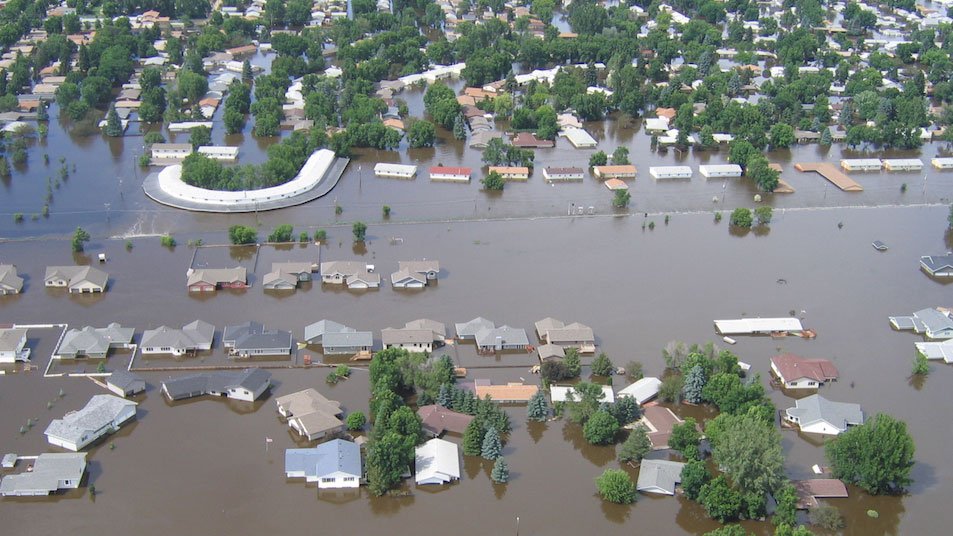
International SWOT Mission Can Improve Flood Prediction
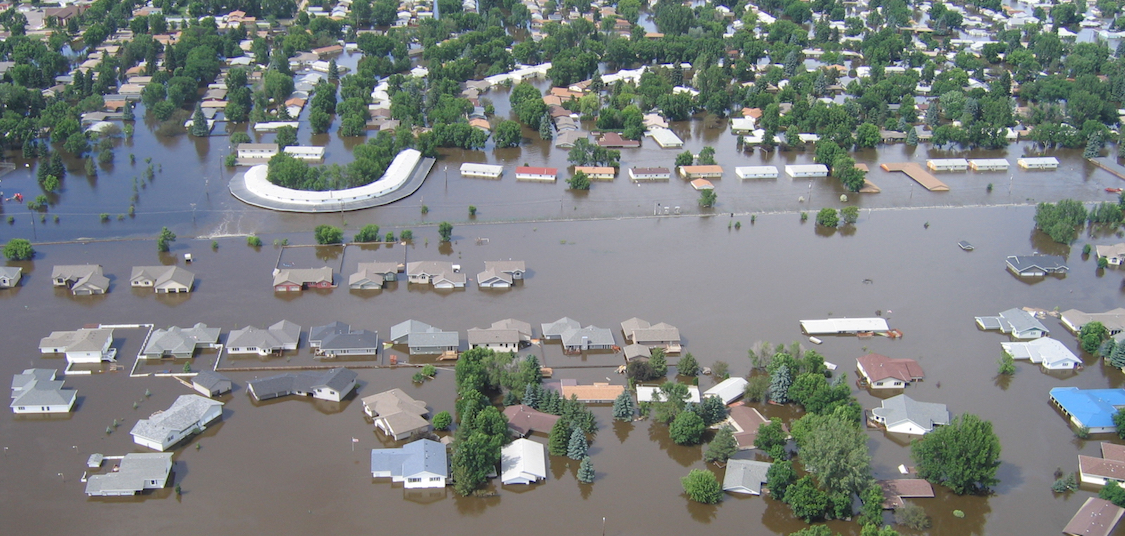
International SWOT Mission Can Improve Flood Prediction
A partnership between NASA and the French space agency, the satellite is poised to help improve forecasts of where and when flooding will occur in Earth’s rivers, lakes, and reservoirs. Rivers, lakes, and reservoirs are like our planet’s arteries, carrying life-sustaining water in interconnected networks. When Earth’s water cycle runs too fast, flooding can result, […]
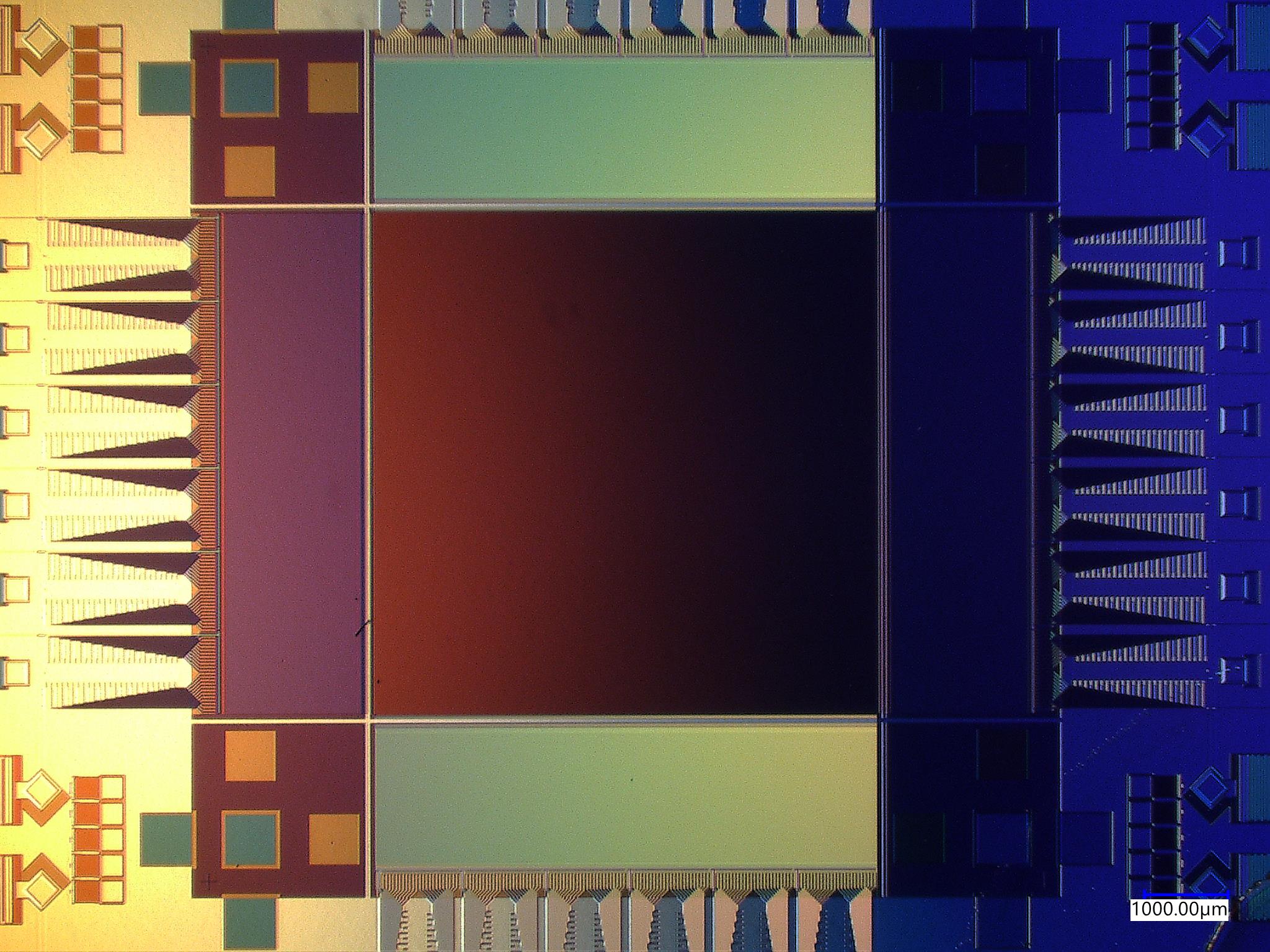
Breaking the Scaling Limits: New Ultralow-noise Superconducting Camera for Exoplanet Searches
Discover more topics from nasa.

Black Holes


IMAGES
VIDEO
COMMENTS
General relativity and quantum mechanics tell us that time travel might be possible, but if it is, then multiple histories must also be possible. Scientifically speaking, for time travel to exist ...
Moskowitz: But really, we can stay within plausible physics and still see how more extreme versions of time travel are possible. See, Einstein's special theory of relativity shows that the rate ...
In Summary: Yes, time travel is indeed a real thing. But it's not quite what you've probably seen in the movies. Under certain conditions, it is possible to experience time passing at a different rate than 1 second per second. And there are important reasons why we need to understand this real-world form of time travel.
That depends. The American theoretical physicist and string theorist extraordinaire Brian Greene, of Columbia University, argues that the plausibility of multiversal travel—conceding that ...
Traveling Back in Time:6,500 years. Nebulae are clouds of gas and dust where stars are birthed, or the remnants of a dead or dying star itself. These beautiful, ethereal cosmic objects are the subject of some of Hubble's most iconic images, but they can also teach us more about how our universe behaves and evolves.
Time and Relativity . Though referenced in H.G. Wells' The Time Machine (1895), the actual science of time travel didn't come into being until well into the twentieth century, as a side-effect of Albert Einstein's theory of general relativity (developed in 1915). Relativity describes the physical fabric of the universe in terms of a 4-dimensional spacetime, which includes three spatial ...
But according to an idea called the "inflationary multiverse," it continues—just not in our universe where we could see it. And as it does, it spawns other universes. And even when it stops ...
No, the universe doesn't appear to rotate; if it did, time travel into the past might be possible. Although people throughout antiquity had argued that the heavens rotate around the world, in 1949 ...
How a rotating universe makes time travel possible January 12 2023, by Paul M. Sutter Credit: Pixabay/CC0 Public Domain It turns out that time travel into the past is actually relatively easy.
More recently, scientists have found evidence that the universe's expansion isn't fixed, but is actually accelerating faster and faster. This accelerating expansion is captured by a term known as ...
And we move through space in all directions just fine, and according to physics, travel through time should be just as possible. One way that people have looked into is via a wormhole—a shortcut ...
An artist's impression of beams of light. Albert Einstein's theory of special relativity states that light travels so fast, in a vacuum, nothing in the universe is capable of moving faster.
This is called the Many Worlds Interpretation, or MWI, originally formulated by Hugh Everett in 1957. In MWI, there is a view that every action that has the possibility of one outcome or another ...
The idea of travelling at the speed of light is an attractive one for sci-fi writers. The speed of light is an incredible 299,792,458 meters per second. At that speed, you could circle Earth more than seven times in one second, and humans would finally be able to explore outside our solar system. In 1947 humans first surpassed the (much slower ...
Astronomers using NASA's Hubble Space Telescope have discovered that the universe is expanding 5 percent to 9 percent faster than expected. This Hubble Space Telescope image shows one of the galaxies in the survey to refine the measurement for how fast the universe expands with time, called the Hubble constant. NASA, ESA and A. Riess (STScI/JHU)
String Theory is a theory posited by American physicist Michio Kaku. This is an alternative to the Many-Worlds Theory. It relies on 11 different dimensions. Here, all matter that exists is made up ...
The Universe . Exoplanets; The Search for Life in the Universe; Stars; Galaxies; Black Holes; ... future advanced instruments could capture possible signs of life - "biosignatures" - from a planet light-years away. ... since they are so far away that it would take tens of thousands of years to travel there even in the fastest spaceships ...